I created a custom pipeline component that uses the OpenXML method here to extract the XML data from within an Excel workbook. The 'raw' XML from the workbook has this schema (generated from an instance of the extracted XML from the OpenXML code referenced above:
<?xml version="1.0" encoding="utf-16"?>
<xs:schema xmlns:b="http://schemas.microsoft.com/BizTalk/2003" xmlns:x="http://schemas.openxmlformats.org/spreadsheetml/2006/main" attributeFormDefault="unqualified" elementFormDefault="qualified" targetNamespace="http://schemas.openxmlformats.org/spreadsheetml/2006/main" xmlns:xs="http://www.w3.org/2001/XMLSchema">
<xs:import schemaLocation=".\Smart Recruiters_ExcelRawXML.xsd" namespace="http://www.w3.org/XML/1998/namespace" />
<xs:annotation>
<xs:appinfo>
<references xmlns="http://schemas.microsoft.com/BizTalk/2003">
<reference targetNamespace="http://www.w3.org/XML/1998/namespace" />
</references>
</xs:appinfo>
</xs:annotation>
<xs:element name="Root">
<xs:complexType>
<xs:sequence>
<xs:element name="dimension">
<xs:complexType>
<xs:attribute name="ref" type="xs:string" use="required" />
</xs:complexType>
</xs:element>
<xs:element name="sheetViews">
<xs:complexType>
<xs:sequence>
<xs:element name="sheetView">
<xs:complexType>
<xs:attribute name="tabSelected" type="xs:boolean" use="required" />
<xs:attribute name="workbookViewId" type="xs:unsignedByte" use="required" />
</xs:complexType>
</xs:element>
</xs:sequence>
</xs:complexType>
</xs:element>
<xs:element name="sheetFormatPr">
<xs:complexType>
<xs:attribute name="defaultRowHeight" type="xs:decimal" use="required" />
</xs:complexType>
</xs:element>
<xs:element name="sheetData">
<xs:complexType>
<xs:sequence>
<xs:element maxOccurs="unbounded" name="row">
<xs:complexType>
<xs:sequence>
<xs:element maxOccurs="unbounded" name="c">
<xs:complexType>
<xs:sequence minOccurs="0">
<xs:element name="is">
<xs:complexType>
<xs:sequence>
<xs:element name="t">
<xs:complexType>
<xs:simpleContent>
<xs:extension base="xs:string">
<xs:attribute ref="xml:space" use="optional" />
</xs:extension>
</xs:simpleContent>
</xs:complexType>
</xs:element>
</xs:sequence>
</xs:complexType>
</xs:element>
</xs:sequence>
<xs:attribute name="r" type="xs:string" use="required" />
<xs:attribute name="s" type="xs:unsignedByte" use="required" />
<xs:attribute name="t" type="xs:string" use="optional" />
</xs:complexType>
</xs:element>
</xs:sequence>
<xs:attribute name="r" type="xs:unsignedShort" use="required" />
</xs:complexType>
</xs:element>
</xs:sequence>
</xs:complexType>
</xs:element>
<xs:element name="pageMargins">
<xs:complexType>
<xs:attribute name="left" type="xs:decimal" use="required" />
<xs:attribute name="right" type="xs:decimal" use="required" />
<xs:attribute name="top" type="xs:decimal" use="required" />
<xs:attribute name="bottom" type="xs:decimal" use="required" />
<xs:attribute name="header" type="xs:decimal" use="required" />
<xs:attribute name="footer" type="xs:decimal" use="required" />
</xs:complexType>
</xs:element>
</xs:sequence>
</xs:complexType>
</xs:element>
</xs:schema>
An example of the first element in the first row is:
<x:row r="1"><x:c r="A1" s="1" t="inlineStr"><x:is><x:t>ID</x:t></x:is>
My question is, how can this be used in the mapper to iterate through the column records and apply each row/column value to the correct row/field in the target XML (below). I have searched online but I havent seen anything that can evaluate the row and apply to the correct target row/field. Assume the input will always have the correct number of columns, even though 'c' is stated to be unbounded.
<?xml version="1.0" encoding="utf-16"?>
<xs:schema xmlns="http://Schemas.SmartRecruiters_Joibs_Manual" xmlns:b="http://schemas.microsoft.com/BizTalk/2003" targetNamespace="http://Schemas.SmartRecruiters_Joibs_Manual" xmlns:xs="http://www.w3.org/2001/XMLSchema">
<xs:annotation>
<xs:appinfo>
<schemaEditorExtension:schemaInfo namespaceAlias="b" extensionClass="Microsoft.BizTalk.FlatFileExtension.FlatFileExtension" standardName="Flat File" xmlns:schemaEditorExtension="http://schemas.microsoft.com/BizTalk/2003/SchemaEditorExtensions" />
<b:schemaInfo standard="Flat File" codepage="65001" default_pad_char=" " pad_char_type="char" count_positions_by_byte="false" parser_optimization="speed" lookahead_depth="3" suppress_empty_nodes="false" generate_empty_nodes="true" allow_early_termination="false" early_terminate_optional_fields="false" allow_message_breakup_of_infix_root="false" compile_parse_tables="false" root_reference="Root" />
</xs:appinfo>
</xs:annotation>
<xs:element name="Root">
<xs:annotation>
<xs:appinfo>
<b:recordInfo structure="delimited" child_delimiter_type="hex" child_delimiter="0xD 0xA" child_order="postfix" sequence_number="1" preserve_delimiter_for_empty_data="true" suppress_trailing_delimiters="false" />
</xs:appinfo>
</xs:annotation>
<xs:complexType>
<xs:sequence>
<xs:annotation>
<xs:appinfo>
<groupInfo sequence_number="0" xmlns="http://schemas.microsoft.com/BizTalk/2003" />
</xs:appinfo>
</xs:annotation>
<xs:element maxOccurs="unbounded" name="Root_Child1">
<xs:annotation>
<xs:appinfo>
<b:recordInfo structure="delimited" child_delimiter_type="char" child_delimiter="," child_order="infix" sequence_number="1" preserve_delimiter_for_empty_data="true" suppress_trailing_delimiters="false" />
</xs:appinfo>
</xs:annotation>
<xs:complexType>
<xs:sequence>
<xs:annotation>
<xs:appinfo>
<groupInfo sequence_number="0" xmlns="http://schemas.microsoft.com/BizTalk/2003" />
</xs:appinfo>
</xs:annotation>
<xs:element name="Root_Child1_Child1" type="xs:string">
<xs:annotation>
<xs:appinfo>
<b:fieldInfo justification="left" sequence_number="1" />
</xs:appinfo>
</xs:annotation>
</xs:element>
<xs:element name="Root_Child1_Child2" type="xs:string">
<xs:annotation>
<xs:appinfo>
<b:fieldInfo justification="left" sequence_number="2" />
</xs:appinfo>
</xs:annotation>
</xs:element>
<xs:element name="Root_Child1_Child3" type="xs:string">
<xs:annotation>
<xs:appinfo>
<b:fieldInfo justification="left" sequence_number="3" />
</xs:appinfo>
</xs:annotation>
</xs:element>
</xs:sequence>
</xs:complexType>
</xs:element>
</xs:sequence>
</xs:complexType>
</xs:element>
</xs:schema>
